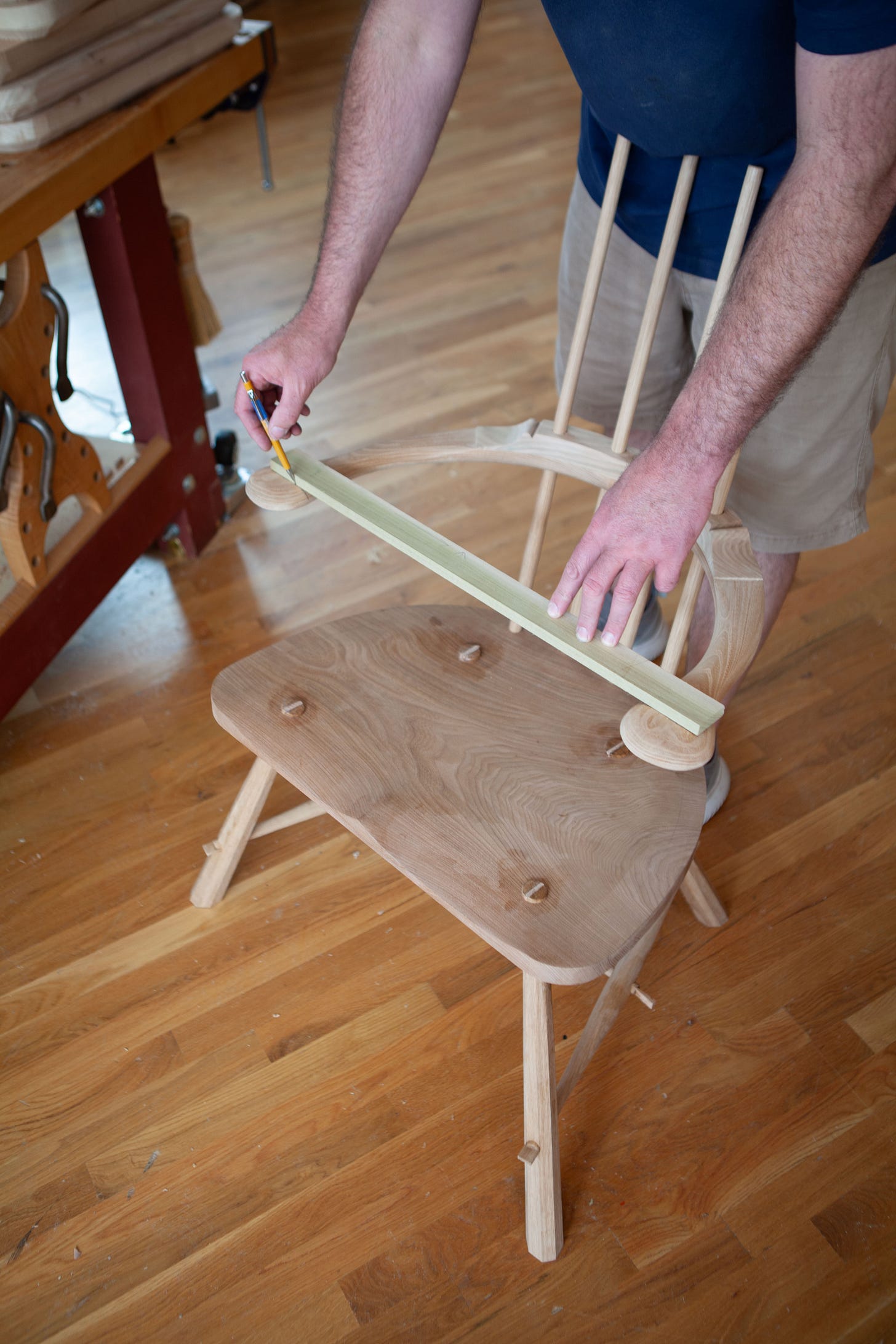When I first showed chairmaker Chris Williams the “sandwich drilling”1 technique, his reply was something like: “Very clever! But it makes it too easy. I don’t know how I feel about that.”
He’s not the only one who expressed uncertainty. John Cashman, a fine maker and frequent commenter here, put it this way:
And I’m glad Chris is continually looking for ways to make building chairs more accessible, and I can see how sandwich drilling might do that. But it’s not something I’m interested in embracing. It reminds me, a little bit, of the days of using router dovetail jigs to cut joints. It limited the joinery. I wish I had just skipped to better dovetail techniques that led to different forms. I'm not sure if I've made the comparison clear, but it seems apt.
So let me back up a bit here on the topic of sandwich drilling and introduce it this way. This technique is not new. Chairmaker Rudy Everts and I have been exploring this technique for three or four years after examining hundreds of old folk chairs and asking ourselves: “How did the maker of this chair do this?”
The answer led us to “sandwich drilling.”

The topic first came up when Rudy, Klaus Skrudland and I were talking about a problem that some chairmaking students had: they couldn’t drill mortises through the arm and into the seat without a lot of guidance (lasers, spotters, mirrors, jigs etc.).
That’s when Rudy said something like: “Couldn’t you just clamp the arm to the seat and drill the mortises that way?”
It was the kind of comment that makes the gravity in your head swell to 11. My brain replied: Yes. Maybe? But what about…?
Fast forward a few months. I am drilling the mortises in a Gibson chair. I have the chair’s arm propped up on jigs over the seat. I am about to drill the 30° angle into arm and seat for the chair’s back sticks.
I shook my head and didn’t pull the trigger of the drill. “This,” I said to myself, “is not how the original makers did this operation. It’s too jiggy, risky and difficult.”
I decided to see if I could figure out how to drill the mortises with the parts clamped together. I drew it out on paper, and in about 10 minutes I figured out where to clamp the arm on the seat for this operation.
The operation worked. But only for the long back sticks. The short sticks used different angles. Then I remembered how John Brown and Chris Williams drilled their sticks.
First they drilled the long sticks for the back. Then they partially assembled the chair, using the long sticks to hold the arm in position over the seat. Then drilled for the short sticks.
The partially assembled chair became the jig.
This moment felt important.
Keep reading with a 7-day free trial
Subscribe to The American Peasant to keep reading this post and get 7 days of free access to the full post archives.







